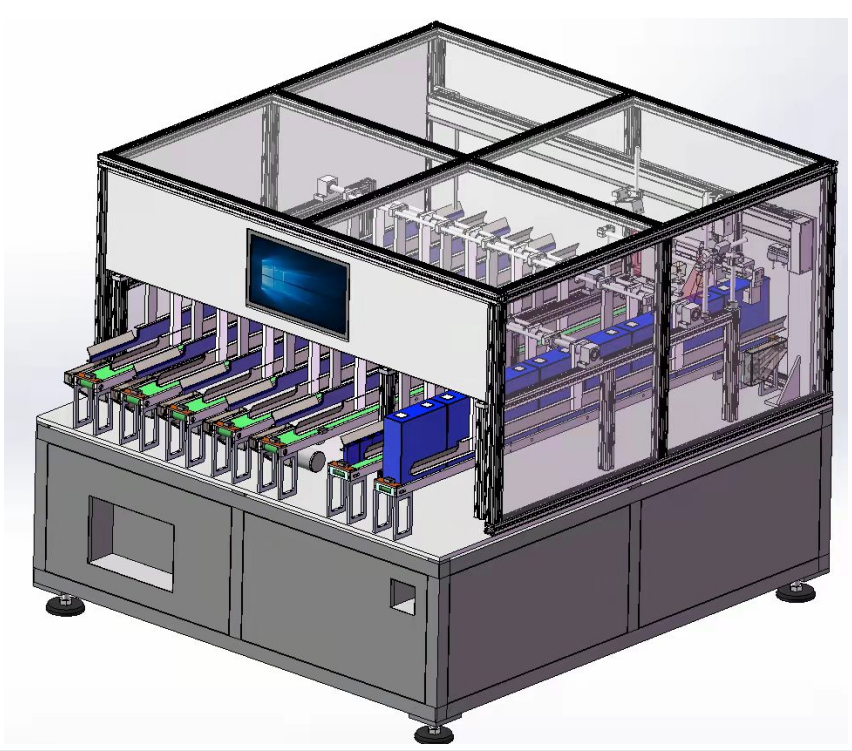Components of a Lithium Battery Module Assembly Line
1. Introduction to Lithium Battery Modules
Lithium battery modules are the building blocks of lithium battery packs. They consist of interconnected lithium battery cells arranged in a specific configuration to meet the desired voltage, capacity, and power requirements. These modules provide a convenient and standardized solution for integrating lithium battery cells into various applications.
2. The Need for an Assembly Line
As the demand for lithium battery modules continues to rise, manufacturers face the challenge of producing them efficiently and reliably. An assembly line approach becomes essential to streamline the production process, minimize errors, and optimize productivity. By implementing a structured workflow, manufacturers can significantly increase their output and meet market demands more effectively.

3. Components of a Lithium Battery Module Assembly Line
A lithium battery module assembly line consists of several interconnected stages, each contributing to the overall production process. Here are the key components of an assembly line:
3.1 Battery Cell Preparation
The first stage involves preparing the individual lithium battery cells for module assembly. This includes activities such as sorting, grading, and inspecting cells for quality assurance. Cell preparation may also involve applying protective coatings or insulation materials to enhance safety and performance.
3.2 Module Enclosure Assembly
In this stage, the components that make up the module enclosure, such as metal or plastic casings, are assembled. This includes securing the battery cells within the enclosure and ensuring proper electrical connections.
3.3 Cell-to-Module Integration
Once the module enclosure is ready, the next step is to integrate the prepared battery cells into the enclosure. This involves precise positioning, interconnecting the cells, and establishing electrical connections using welding or soldering techniques.
3.4 Testing and Quality Control
Quality control is crucial throughout the assembly process. In this stage, the battery modules undergo various tests to ensure they meet the required specifications and performance standards. This includes capacity testing, voltage checks, temperature analysis, and other performance metrics.
3.5 Packaging and Final Inspection
After passing the quality control tests, the battery modules are packaged and prepared for shipping. Final inspections are conducted to verify that each module meets the required quality standards and safety regulations. Proper labeling and documentation are also completed during this stage.
4. Benefits of an Assembly Line Approach
Implementing a Lithium battery module laser welding station offers several advantages for manufacturers:
4.1 Increased Efficiency and Productivity
An assembly line streamlines the production process, eliminating bottlenecks and reducing unnecessary delays. With a structured workflow, manufacturers can achieve higher production volumes while maintaining consistent quality and meeting deadlines.
4.2 Consistent Quality Assurance
By incorporating quality control measures at various stages of the assembly line, manufacturers can ensure that each battery module meets the required performance and safety standards. This reduces the likelihood of defective modules reaching the market, enhancing customer satisfaction and brand reputation.
4.3 Cost Reduction and Scalability
An assembly line approach optimizes resource utilization, reduces labor costs, and minimizes material waste. The streamlined process allows manufacturers to scale up production more efficiently, meeting the increasing demand for lithium battery modules without compromising on quality.
5. Future Trends and Innovations
As the lithium battery industry continues to evolve, new technologies and innovations are emerging to further enhance the assembly line process. These include the implementation of automation, robotics, and artificial intelligence to streamline production, improve accuracy, and reduce human error.
182
0
0


Comments
All Comments (0)